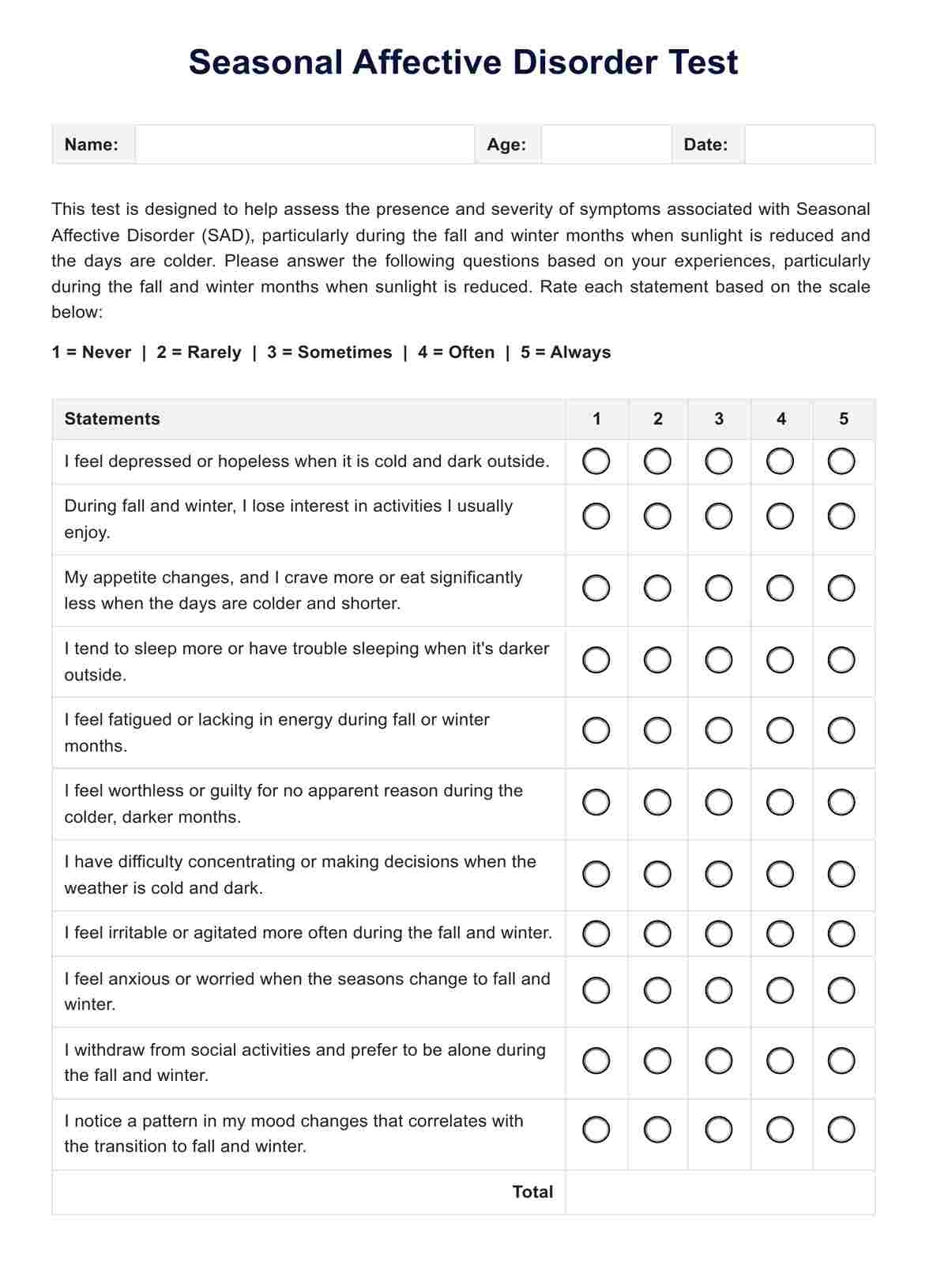Seasonal depression, or Seasonal Affective Disorder (SAD), is a type of depression that occurs at a specific time of the year, usually during fall and winter, while other forms of depression can occur year-round.

Seasonal Affective Disorder Test
Explore our Seasonal Affective Disorder Test template, designed to help healthcare professionals assess and manage SAD symptoms effectively.
Use Template
Seasonal Affective Disorder Test Template
Commonly asked questions
Seasonal affective disorder is a mental health condition that typically lasts for about 4 to 5 months, coinciding with the fall and winter months when daylight hours are shorter.
People cope with SAD through various strategies, including light therapy, regular exercise, maintaining a healthy diet, psychotherapy, and, in some cases, medication.
EHR and practice management software
Get started for free
*No credit card required
Free
$0/usd
Unlimited clients
Telehealth
1GB of storage
Client portal text
Automated billing and online payments











